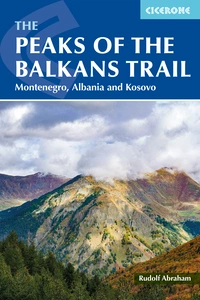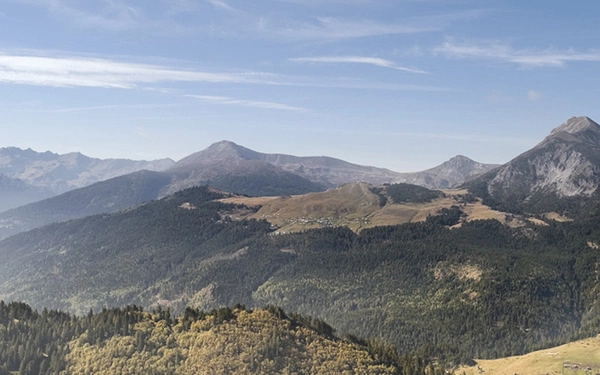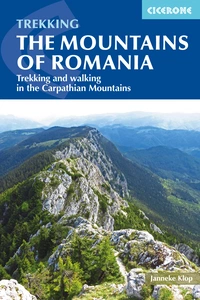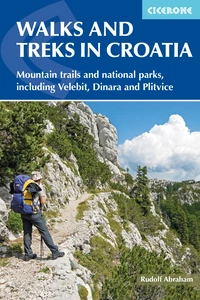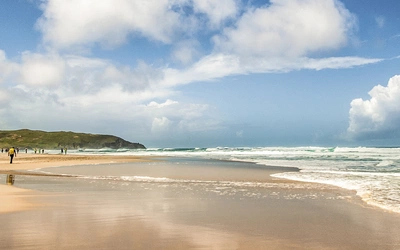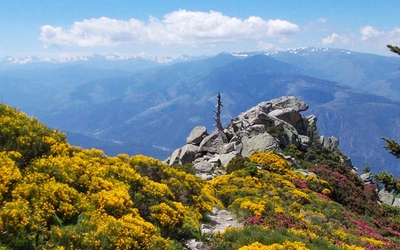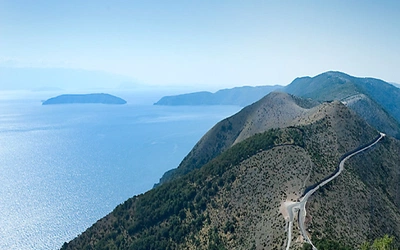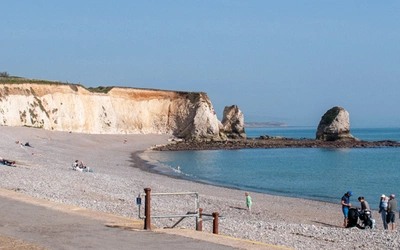Walking the Peaks of the Balkans trail: everything you need to know
The Peaks of the Balkans is a cross-border long-distance trail through Montenegro, Albania, and Kosovo's spectacularly wild and rugged borderlands. Whilst the popularity of the route has undoubtedly increased in recent years, this route is perfect for those wishing to escape to more remote landscapes and have new cultural experiences. The Peaks of the Balkans trail passes through the unspoilt accursed mountains and is different to anything you may experience in more frequently visited areas of Europe, such as the Alps. Sound like something you would be interested in? Here is everything you need to know about the trail.
The Peaks of the Balkans Trail
Montenegro, Albania and Kosovo
£18.95
Guidebook to the Peaks of the Balkans Trail, a 192km trek through Montenegro, Albania and Kosovo. The route, which can comfortably be completed in less than a fortnight, is waymarked and covers terrain between 670m and 2300m in altitude, taking in remote valleys, dramatic mountain passes, stunning scenery and villages untouched by time.
More information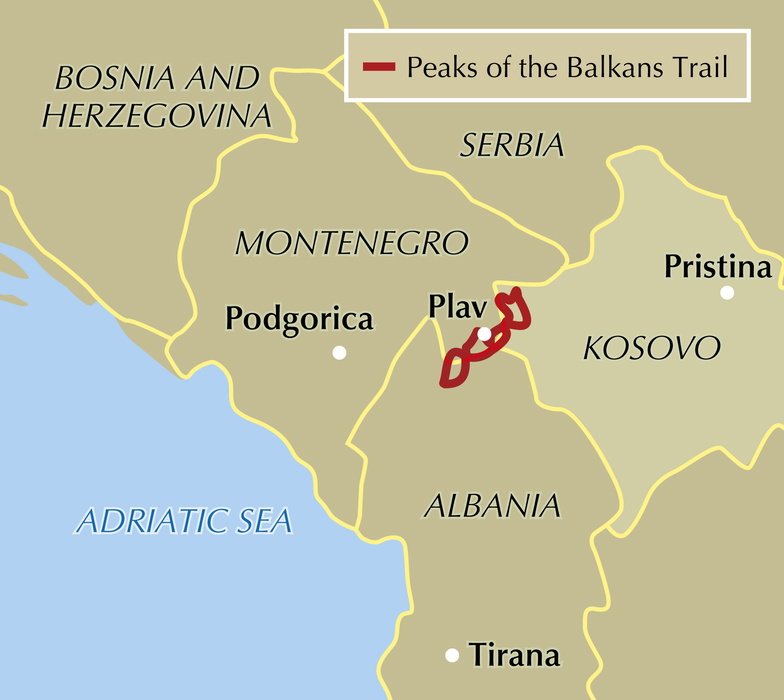
Where does the route start and end?
The Peak of the Balkans Trail is a circular route, and so there are several points at which you can start and finish hiking the Trail - and there are two points where the 'circuit' meets or almost meets, like a figure of eight. However, the most convenient places to start (taking into account direct flights from the UK and local transport) are Theth in Albania, Plav in Montenegro or Reke e Allages in Kosovo. The guidebook describes the route from Theth; however, there is nothing stopping you from starting at Stage 6 (for example) rather than Stage 1.
How long is the Peaks of the Balkans Trail?
A circular route of around 192km in length, it takes in remote valleys, lakes and mountain passes, winding its way through some stupendous mountain scenery and passing through traditional mountain villages which often feel like somewhere time forgot. It’s a corner of Europe few people are familiar with, let alone visit.
Starting from the village of Theth in Albania, the route crosses a pass to reach the Valbona Valley, and climbs to the Montenegrin border below Maja Kolata, one of the highest peaks in the area, before descending to the tiny settlement of Çeremi. Later it passes through the remote summer settlement of Dobërdol before crossing the border into Kosovo, and descends to the Rugova Gorge. Crossing into Montenegro it passes through Babino polje then climbs to Lake Hrid, before descending to the town of Plav and, after crossing Vrh Bora, to the village of Vusanje, before following the Ropojana valley up into Albania again, crossing the Pëjë Pass and descending to Theth.
How many days does it take to walk?
The route can be hiked in around 10 days or extended over a couple of weeks, with around 1/3 of the trek taking place in each country. The guidebook breaks down the route into ten stages ranging between 11 and 27.5km in length.
How difficult is the Trail?
The trail is well marked for much of its length, a reasonably good map is available covering the whole route, and access is relatively straightforward – sometimes extremely straightforward – to several points along the way by local buses. Good, knowledgeable local guides are available to accompany groups or individuals along the route. Hiking is along existing paths and 4WD tracks and is not technically difficult – however the surrounding mountains are high and the weather can change suddenly and dramatically, and for the most part the route is very remote. Exit points, should you need to break your trek short in an emergency, may be several days apart, and may not be in the country you arrived in.
When is the best time to walk the Peaks of the Balkans Trail?
The hiking season begins in May or June, with the latter bringing more settled weather and milder temperatures – although you can still expect snow patches in June, or until July in higher areas. Wildflowers are at their most spectacular in June. July is statistically the driest month, followed by August and June – but this doesn’t mean you shouldn’t be prepared for possible rain or thunderstorms during these months, just as at any other time of year. In October the landscape turns to beautiful autumn colours, and the first snowfall arrives sometime this month, which generally marks the end of the trekking season in Prokletije.
What about accommodation?
Small village guesthouses provide accommodation along the trail, many of them outstanding, offering wonderful food and hospitality. Bedding is provided (sheets, blankets, pillows), so there’s no need to carry a sleeping bag – although it’s a good idea to carry a lightweight silk or cotton sleeping bag for use on a couple of the overnights where sleeping facilities are more basic. Camping is possible on the Trail – some guesthouses have campsites (with the obvious advantage that you can have dinner at the guesthouse), and there are various points along the route suitable for wild camping (but note that camping within a national park or nature reserve is prohibited, which technically at least rules out almost the entire route in Montenegro).
Do you need border permits?
It’s possible to start and finish the Peaks of the Balkans in any of the three countries through which it passes, however whichever starting point you decide on, you’ll need to obtain a cross-border permit from the relevant authorities in Montenegro, Albania or Kosovo before setting off and actually walking the trail. Judging by the helpful and informative Peaks of the Balkans website, you would be forgiven for thinking this should be easy enough to do yourself, but in fact, it’s not quite as straightforward as you might expect, and it is worth simply getting a local agency to sort out the permit (Zbulo in Albania have a clear, up-to-date system). The cost of the permit is €10 plus €3 for each additional person (2024) – a fee levied by the police in Montenegro.
Peaks of the Balkans Stage Summary
| Stage | Start | Finish | Distance |
|---|---|---|---|
| 1 | Theth (Albania) | Valbona (Albania) | 19.5km |
| 2 | Valbona (Albania) | Çeremi (Albania) | 14km or 11km |
| 3 | Çeremi (Albania) | Dobërdol (Albania) | 15.5km |
| 4 | Dobërdol (Albania) | Milishevc (Kosovo) | 23km |
| 5 | Milishevc (Kosovo) | Rekë e Allagës (Kosovo) | 16km |
| 6 | Rekë e Allagës (Kosovo) | Drelaj or Restaurant Te Liqeni (Kosovo) | 10km or 23km |
| 7 | Restaurant Te Liqeni (Kosovo) | Babino polje (Montenegro) | 16km |
| 8 | Babino polje (Montenegro) | Plav (Montenegro) | 20km |
| 9 | Plav (Montenegro) | Vusanje (Montenegro) | 27.5km |
| 10 | Vusanje (Montenegro) | Theth (Albania) | 21.3km |
| Total | Theth (Albania) | Theth (Albania) | 182.8km |

